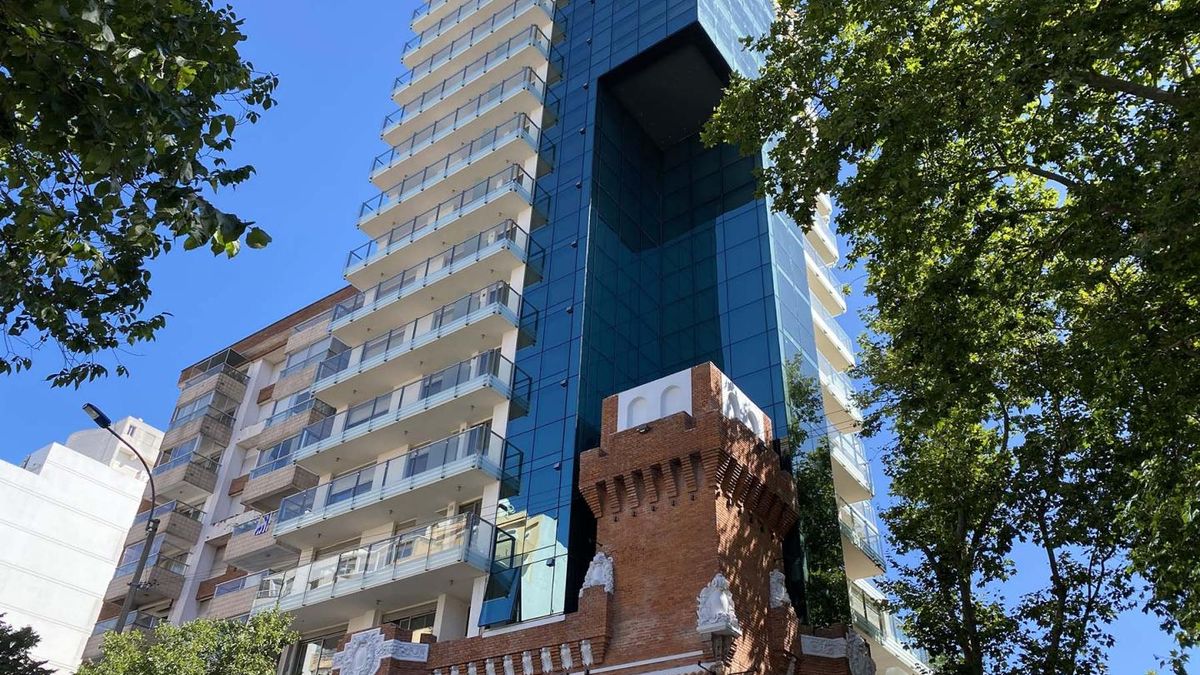Nowadays, it is quite common in Uruguay see a building with 2 integrated façades: in front, a low, old, historic façade from the beginning of the 20th century and in the back, another, modern, glazed façade, several stories high.
It is a architectural technique in which structures are built independent of the original facade of a building. These structures, which can be made of different materials, are attached to the original façade and are used for various purposes, such as expanding the living space, improving energy efficiency, or simply for aesthetic purposes.
Facadeism in its most common sense implies retaining the façade of a (usually historic) building that is considered to have some architectural or cultural value, in order to build an entirely new space behind it.
The conjunction of both structures, historical or old with the new or modern, offers home renovation; as it creates flexible structures that feed on the existing infrastructure.
Parasitic facades are not exclusive to modern architecture. In fact, in many European cities, you can find historic buildings that have been modified with parasitic facades to adapt them to current needs. These facades, which can be from different periods and styles, are a sample of the adaptability of architecture over time.
However, the technique of parasitic facades is not exclusive to modern architecture. In fact, in many European cities, you can find historic buildings that have been modified with parasitic facades to adapt them to current needs. These facades, which can be from different periods and styles, are a sample of the adaptability of architecture over time.
The conservation of architectural heritage is a topic of great importance today. Ancient architecture is a testament to a people’s history and culture, and it is important to preserve it for future generations.
Regarding care in construction, it is important to note that high-quality materials must be used and that local rules and regulations must be followed to ensure the safety and durability of the building.
integrating the past
The increase in the density of cities has directly affected the percentage of space that is free to develop new and independent constructions. The option of making architecture then arises where the constructions are too deteriorated or the new projects are far from the spatial possibilities that an old building can offer. Preserving only the façade can be presented as a partial solution that makes it possible to preserve, in part, the urban character of a work if it has some public or cultural value.
The most famous example, although not the most obvious, is the White House in Washington DC, whose interior was rebuilt in 1948 behind the original 1800 façade.
Trends and opinions
There are those who think that demolishing a building, leaving its façade standing, suffers from the mistake of thinking that by keeping that fragment a building is preserved. Furthermore, that through this action the heritage of a neighborhood or of the city itself is being safeguarded.
Other specialists, for their part, indicate that the opinion is widespread: buildings with heritage value, they must be maintained, and allow the integration of a new, broader and more important, unified structure.
conclusions
Parasitic architecture is a growing trend around the world, in part, due to the lack of space in the cities. It is also a trend among designers and architects, who have found in it an original way of creating, devising new structures on top of old ones.
Integrating facades and buildings is an art of survival and imagination, whose destiny is the revitalization of cities.
In short, the work of the architects in the design of the parasitic facades, is about linking the art and beauty of the historical, with the modern, creating a hybrid, of greater preponderance, prominence, and attraction for the neighborhood and the city.
* Gonzalo Martínez Vargas is CEO Moebius Real Estate Consultant.
Source: Ambito




